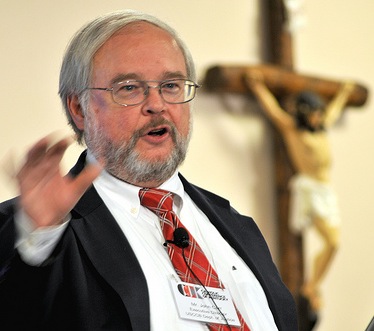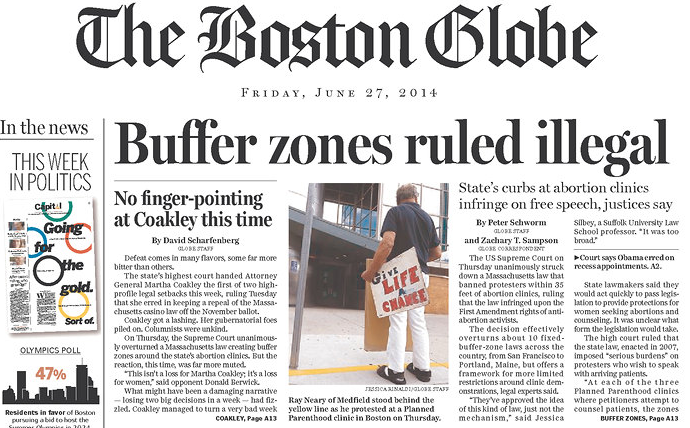So The Washington Post ran a story the other day that made me feel very strange, for strictly journalistic and, yes, political reasons.
The story focused on the retirement of John Carr, for 25 years a key public policy adviser to the U.S. Catholic bishops. The whole point of the story is that the bishops are now being led by people — I assumed that meant Cardinal Timothy Dolan of New York — who are, shall we say, immoderate. They are too conservative, you see, because they are rather obsessed with issues such as abortion, marriage and religious liberty.
Carr, on the other hand, is a moderate’s moderate. From all indications, he appears to be a pro-life Democrat (that’s an accurate label for me, as well) who has been a crucial leader among liberal evangelicals, progressive Catholics and other folks of that ilk. Most of all, the story wants readers to understand that Carr’s departure could mean hard times for true Catholic moderates who care about church teachings on issues of justice and peace.
This made me think of that famous “Preserving Our Readers’ Trust” (.pdf) study of The New York Times issued back in 2005, following several scandals linked to the world’s most powerful newsroom. In response, editor Bill Keller, yes that Bill Keller, wrote a response entitled “Assuring Our Credibility” (.pdf) that included these words about the challenges journalists face when covering political and religious issues:
We must … be more alert to nuances of language when writing about contentious issues. The committee picked a few examples — the way the word “moderate” conveys a judgment about which views are sensible and which are extreme, the misuse of “religious fundamentalists” to describe religious conservatives — but there are many pitfalls involved when we try to convey complex ideas as simply as possible, on deadline.
Thus, I would like GetReligion readers to read the Post story about Carr with that passage in mind.
What’s my point? Well, I think that Carr almost certainly can be called a “moderate” Catholic in that his life’s work falls somewhere in between the church’s truly liberal branch and the whole world of doctrinally conservative Catholics. However, to establish his “moderate” credentials, it would be good to hear Carr’s work evaluated by his critics on both sides of this divide. Correct?
Instead, this is what we get:
The mixing of religion and politics engenders powerful passions, but insiders know that faith advocates typically aren’t players in Washington. Carr is one of the few exceptions. But his influence is only part of the reason Carr’s exit … is being mourned. Some are also concerned about who will come after him.
At a time when Catholics are watching their community become increasingly polarized along political lines,
Carr is considered a dying breed: a Catholic moderate with a foot firmly in both camps. He worked for the White House Conference on Families under President Jimmy Carter and was a Democratic candidate. He has also zealously slammed the Obama White House for its mandate that employers provide contraception coverage to employees. At a good-bye event this week at the U.S. Conference of Catholic Bishops headquarters, Carr’s voice sounded angriest when he bemoaned the Bush-led Iraq War.
Catholics are becoming more divided over whether they focus on church teachings against war and poverty or the ones against abortion and gay marriage. Catholic progressives are particularly worried about Carr leaving as Church officialdom in recent years has put greater and greater emphasis on defending the unborn.
“If John Carr hadn’t been there for the past 20 years, who knows what would have happened?” said John Gehring, who focuses on Catholic issues for the left-leaning advocacy group Faith in Public Life and often clashes with the bishops.
GetReligion readers will be stunned to know that the next quote comes from Jim Wallis of Sojourners, and so forth and so on. Later on, we hear from Carr’s brother — New York Times media columnist David Carr.
So here is my question: Read this story and name, for me, the key voice evaluating Carr’s work and career from the conservative side of the Catholic establishment, whether that is in politics, higher education or even the church hierarchy.
Read the story, twice if need be. Look for the conservative voices, amid all of the high-profile voices on the left and on the center-left that are featured in this news — not editorial page — report. There should be informed, articulate conservatives who help readers evaluate Carr’s work. Right? I mean, this is journalism, after all, not a work of advocacy writing.
So who is your favorite Catholic conservative featured in this news story?
Good luck with that.














